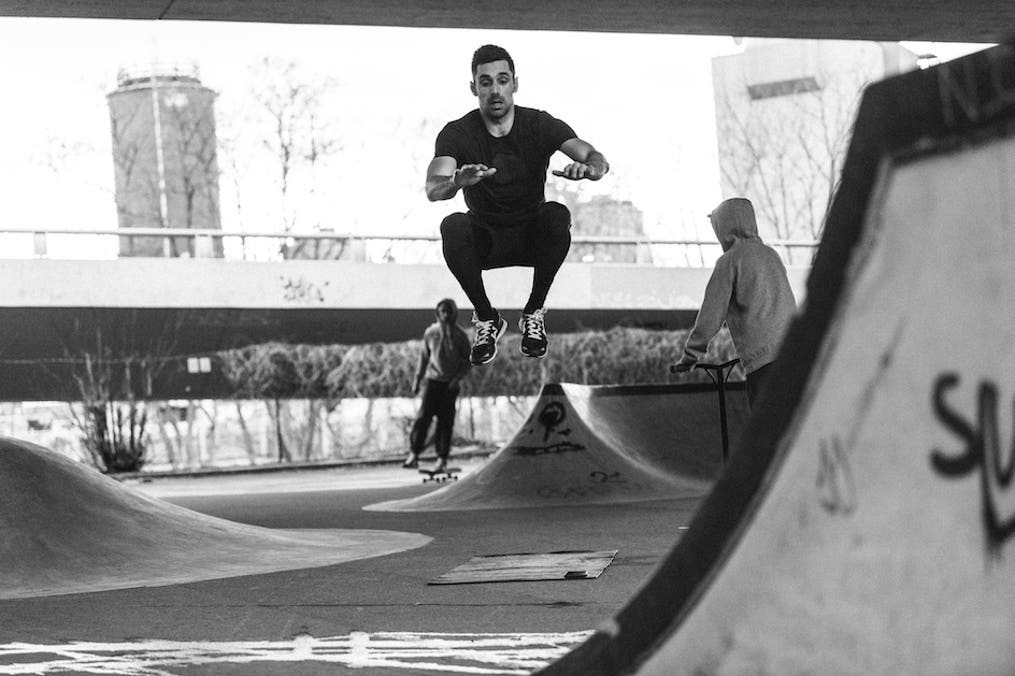Developing power is one of the most popular fitness goals out there, but it's a goal that takes both commitment and the right training method to reach. Enter plyometrics. These jump exercises look simple, but are deceivingly effective.
What the f**k are plyometrics?
In simple terms, plyometrics refers to “jump training” and includes dynamic movements not just up and down but also side to side and twisting back and forth. Plyometric movements are designed to improve coordination as well as link strength and speed. These exercises are the perfect combination of stability, mobility, strength, power and dynamic balance and are used to increase jump height, sprint and agility as well as improve your ability to coordinate movements.
Simple movements with a big impact
The role of plyometrics is to activate the body’s central nervous system and improve its elasticity. By stimulating the fast-twitch muscle fibres, plyos allow you to generate force quickly & efficiently.
What happens during a plyometric exercise is a stretch-shortening cycle (SSC), muscle lengthening followed by immediate rapid muscle shortening. The SSC uses the stretch reflex and stored elastic energy to generate more power during the movement. By storing and releasing elastic energy, you increase speed and power with less energy expenditure.
The power of elasticity
There are many reasons why improving your body's elasticity is so important. Your body is like a rubber band and every movement has an elastic component. To stretch it, you need to stabilize one end and pull back the other. This stability is the anchor point for your muscles and connective tissue, that allows you to release a powerful amount of energy. By improving your body’s elasticity, not only are you enhancing your power to help you jump higher, run faster and move more efficiently, you also decrease the potential for injury. Elasticity gives you a set of brakes, so to speak, and deceleration tools that prevent injuries occuring by protecting the joints and helping your body endure rapid loads.

You’re just a jump, hop and bound away from a plyometric movement
We already mentioned that plyometrics is also known as “jump training”, however, technically speaking, that’s not 100% accurate since plyometric movements also include hops and bounds. Jumps are two-leg takeoffs and two-leg landing, bounds are one-leg takeoff and opposite leg landing and hops are one-leg takeoff and the same leg landing. Plyo movements fall into 4 categories: Rapid, short, long and very long response drills.
Rapid response drills are short, quick movements. These low force, high speed activities, for example quickly moving your feet back and forth over a line for as little as six seconds, are designed to improve ground reaction forces and quickness. Rapid response drills are best performed at the end of your dynamic warm up, right before a training session, run or team sport.
Short-response drills are high-force, low frequency movements. Freeletics exercises like split lunges and high jumps are a good example of these, as well hurdle jumps. They are designed to improve elasticity as they allow you to hit the ground immediately then spring back off.
Long-response drills are moderate-force longer range of motion movements which focus on stability and force, laying the foundation for more explosive movements. During these exercises your feet stay on the ground for longer, but you apply more force with each repetition. An example of a long-response drill is a squat jump.
Very long-response drills are exercises with a long range of motion and increased force. Examples of these are resisted squat jumps & split jumps with extra weight. From a biomechanics perspective, these exercises are only recommended for healthy, injury-free athletes as extra weight enhances the load on the joints.
Let's recap:
Done correctly, plyometrics are a great way to increase power, muscular endurance and explosive strength. These exercises appear simple, but can have a considerable impact on your body's elasticity and your athletic performance.